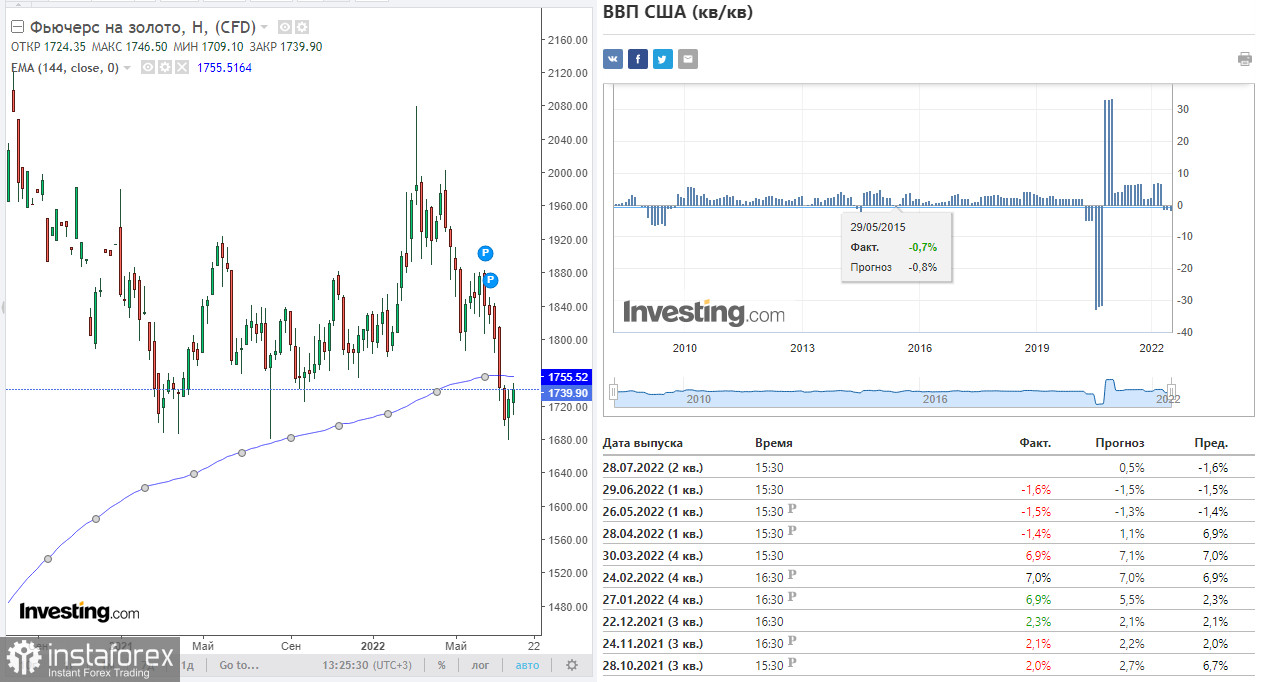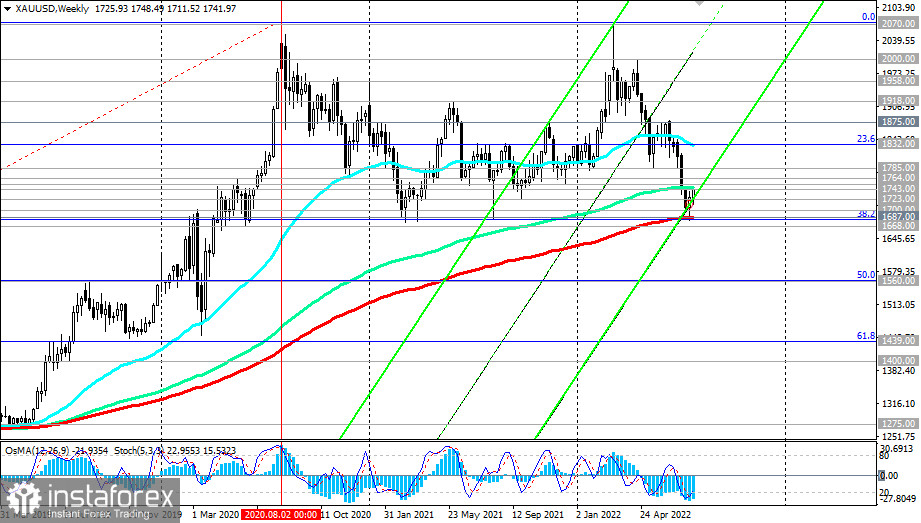Strange as it may seem, at first glance, the dollar weakened sharply after Fed's decision yesterday to raise interest rates by 0.75%. Moreover, in their accompanying statement, Fed officials said it "would be appropriate" to raise the rate further.
"Inflation remains high, reflecting pandemic-related imbalances, rising food and energy prices, and broader price pressures... The situation in Ukraine is creating additional upward pressure on inflation, affecting global economic activity," they said.
At the same time, "the unemployment rate remains low," allowing the Fed to act more decisively to curb the accelerating rise in inflation, which reached new 40-year highs in June, above 9.0%.
Strong US labor market data, coupled with positive data in the main areas of the American economy, provide the Fed with more room to maneuver in choosing the vector of monetary policy.
The Fed also stressed its determination to bring inflation back to its 2% target. "Another unusually large rate hike could be appropriate at the next meeting," Fed Chairman Jerome Powell confirmed the Fed's tough intentions at a press conference following yesterday's meeting, as "inflation is well above target."
But something went wrong. The dollar fell shortly after the start of the Fed press conference. What has alarmed investors? Indeed, strong macro data continue to come from the United States, and the labor market is characterized by an extremely strong excess of demand for labor over its supply.
Firstly, such a decision by the Fed to raise the interest rate by 0.75% at the July meeting was expected, and, in general, has already been taken into account in prices.
Secondly, Powell's comments also sounded alarming notes that alerted investors. "We expect a period of economic growth below the trend," and the whole "process" will be accompanied by a period of "lower economic growth, weakening the labor market," said Powell. But he seems to be a little modest.
US GDP fell by -1.6% in Q1 2022. The first time since 2015, apart from the fall in GDP in the 1st half of 2020, when the entire global economy was affected by the coronavirus pandemic. Economists believe that the decline in GDP for two quarters in a row indicates a recession in the economy. Despite the fact that this word is so scary for economists, it may be so.

"A recession is a relatively moderate, non-critical decline in production or a slowdown in economic growth. The decline in production is characterized by zero growth in the gross national product (stagnation) or its fall for more than six months," Wikipedia says.
Today (at 12:30 GMT), the initial estimate of US GDP for the 2nd quarter will be published. Optimistic forecasts assume GDP growth in Q2 by +0.4%.
However, there is another opinion that the decline in the US economy continued in the 2nd quarter, which ended last month.
If so, then tightening monetary policy by raising interest rates in a recession is like playing Russian roulette: it will pass or it won't. And most likely it won't. It seems that stagnation is turning into stagflation (zero growth or falling GDP against the backdrop of high inflation), and this is an even worse scenario that threatens the economy with a downward spiral with millions of unemployed citizens and impoverishment of the majority of the country's population.
The U.S. midterm congressional elections will be held in the fall (November 8), which could be critical for Democrats and the 2024 presidential election. And the Democrats, including President Joe Biden, are now in a very unenviable position.
It is possible that soon, and even before the end of this year, the Fed will again have to move from tightening to easing its monetary policy.
That is why the dollar fell sharply yesterday, and today continued to fall during the Asian trading session, primarily against the popular defensive assets—the yen, franc, and gold.
As for this precious metal and the XAU/USD pair, it continues to rise today after yesterday's "jump," trying to return to the long-term bull market zone, above the resistance level of 1743.00.

And from the news for today, market participants will pay attention to the publication at 12:30 (GMT) of weekly data from the US labor market and, as we noted above, data on US GDP for the 2nd quarter, which may confirm the gloomy forecasts of some economists about the outlook of the American economy. If the expected data turns out to be frankly weak, then the pressure on the dollar will increase, and the XAU/USD pair, at the same time, will accelerate growth.
As you know, with an increase in interest rates, gold prices usually decrease as the cost of acquiring and storing it increases. Its quotes are extremely sensitive to changes in monetary policy by the world's leading central banks, especially the Fed.
Gold does not bring investment income, but is in active demand during geopolitical and economic uncertainty and is a protective asset in the face of rising inflation. Now is just such a moment.
Also, an alternative scenario cannot be ruled out: US GDP will exceed the forecast for growth in the 2nd quarter by +0.4%, and the number of jobless claims will continue to decline. In this case, it is worth waiting for the strengthening of the dollar and the fall of XAU/USD.
In any case, a sharp increase in volatility at the beginning of the American trading session is almost guaranteed.
 Tiếng Việt
Tiếng Việt 
 Русский
Русский English
English Bahasa Indonesia
Bahasa Indonesia Bahasa Malay
Bahasa Malay ไทย
ไทย Español
Español Deutsch
Deutsch Български
Български Français
Français 中文
中文 বাংলা
বাংলা हिन्दी
हिन्दी Čeština
Čeština Українська
Українська Română
Română

